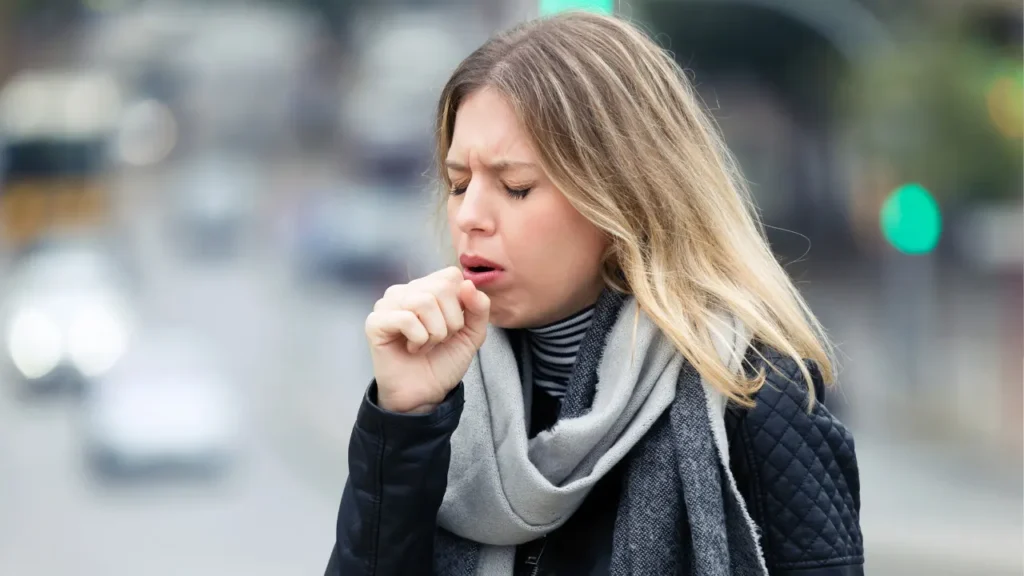The lamiaceae family of plants includes the perennial herb known as white horehound (marrubium vulgare), which is indigenous to Europe, northern Africa, and western Asia. The herb has long been valued for its therapeutic benefits, particularly in the treatment of digestive and respiratory conditions. This article offers a detailed examination of the chemical components of white horehound, the associated health advantages, the ideal dosage, side effects, possible drug interactions, and the best ethical usage of it as a nutritional supplement.
You May Also Like:
The Best Mushroom Supplements for Memory: 5 Top Brands Reviewed
Finding the Best Supplements for Brain Fog After COVID: 5 Top Brands Reviewed
White Horehound: Benefits, Dosage, Side Effects, Drug Interactions, And Other Important Information is an original (NootropicsPlanet) article.
Nature of White Horehound
White horehound is a perennial herbaceous plant that is distinguished by its wooly, grayish-green leaves and tiny, white flowers grouped in tight clusters. The plant normally reaches a height of 18 to 24 inches and does well in sandy or rocky soils with good drainage. White horehound’s leaves and flowering tops are harvested for their medicinal properties and are used to make teas, extracts, syrups, and lozenges, among other useful things. The herb’s bio-active components, including marrubiin, which also give it its therapeutic benefits, are thought to be the reason for its bitter flavor.
Health Benefits of White Horehound
White horehound has historically been used to treat respiratory conditions like cough, bronchitis, and asthma. The expectorant properties of the marrubiin help to remove mucus from the respiratory tract, while its antispasmodic properties serve to reduce muscle spasms brought on by coughing and asthma.
A.) Digestive Health: Indigestion, bloating, and flatulence are just a few of the digestive problems that white horehound has been used to cure. The antispasmodic properties help the smooth muscles of the digestive tract to relax, which can lessen the feelings of gastrointestinal distress.
B.) Antioxidant Activity: Flavonoids found in white horehound have strong antioxidant properties that help fight inflammation and oxidative damage. As a result, overall health may be improved and a number of chronic diseases may be avoided.
C.) Antimicrobial Effects: White horehound has been shown to have antimicrobial effects against a number of bacterial and fungal strains, making it a viable treatment option for infections and can be a great immune system booster.
D.) Cardiovascular Health: White horehound can help lower blood pressure and can potentially improve overall cardiovascular health, according to some research, as a result of its vasodilatory and anti-inflammatory properties.

Chemistry of White Horehound
Alkaloids, diterpenes, flavonoids, phenylethanoid glycosides, and essential oils are just a few of the chemical components found in white horehound. Marrubiin, a labdane diterpene, and different flavonoids like apigenin, luteolin, and quercetin are the main bio-active substances in this plant that are primarily responsible for its therapeutic benefits.
It has recently been discovered that marrubiin possesses anti-inflammatory, antispasmodic, and expectorant properties, which support its therapeutic effects on the respiratory and digestive systems. The antioxidant, anti-inflammatory, and antibacterial properties of flavonoids, on the other hand, are crucial for your general health and overall wellbeing.
Physiological Properties of White Horehound
The following succinct statement summarizes the physiological pathways by which white horehound exerts its therapeutic benefits on the body and brain:
A.) Reduction of Pro-inflammatory Mediators: White Horehound has the ability to prohibit the synthesis of pro-inflammatory mediators such as nitric oxide, prostaglandins, and cytokines, and marrubiin, the main active ingredient in white horehound, has been discovered to have anti-inflammatory properties. This property can contribute to its therapeutic effects on numerous inflammatory disorders by reducing inflammation in the respiratory and digestive systems.
B.) Antispasmodic Mechanism: Marrubiin has antispasmodic effects due to its ability to relax the smooth muscles in the digestive and respiratory tracts. This action relieves symptoms and enhances overall performance by reducing muscle spasms brought on by cough, asthma, and gastrointestinal conditions.
C.) Expectorant Mechanism: Marrubiin’s expectorant properties aid in thinning and loosening mucus in the respiratory tract, facilitating its expulsion. This procedure facilitates the removal of mucus from the airways, which enhances breathing and reduces the symptoms of respiratory conditions including cough and bronchitis.
D.) Antioxidant Properties: White horehound flavonoids have strong antioxidant properties that aid in scavenging free radicals and shielding cells from oxidative stress. This activity promotes general health and might help stop the onset of chronic conditions linked to oxidative stress.
E.) Antimicrobial Properties: Flavonoids and essential oils, which are among white horehound’s chemical components, are thought to be responsible for the herb’s antimicrobial effects, which have been shown to support immune system health and lower the risk of infection by inhibiting the growth of a number of bacterial and fungal strains.
These physiological properties emphasize white horehound’s broad therapeutic potential and emphasize how crucial it is to understand its bio-active constituents’ interactions with the body and brain.

Optimal Dosage of White Horehound
The ideal white horehound dosage varies depending on your age, overall health, and the particular illness being treated. Adults are typically advised to take 4.5 grams of dried white horehound herb daily or 1-2 grams of the concentrated extract for the best results. To find the right dosage for your specific needs, it is important to talk to a healthcare provider before beginning any supplementation.
Side Effects of White Horehound
When taken in moderation, white horehound is regarded as safe. However, you may encounter negative reactions including allergic reactions, stomach discomfort, and light-headedness. White horehound should be avoided by women who are pregnant or nursing since it can cause uterine contractions and interfere with lactation. Additionally, before taking supplements containing white horehound, if you have any pre-existing medical disorders including diabetes, low blood pressure, or are having surgery, you should first speak with your doctor.

Potential Substance Interactions with White Horehound
White Horehound can interact with specific drugs and substances, potentially causing negative side effects or reducing the effectiveness of the drugs. These interactions include, among others:
A.) Antihypertensive Drugs: Due to white horehound’s putative vasodilatory properties, antihypertensive drugs can be enhanced, increasing the risk of low blood pressure. Before using white horehound, if you are using blood pressure drugs, you should speak with your doctor.
B.) Diabetes Drugs: When combined with diabetes medications, white horehound can have hypoglycemia effects that can raise the risk of low blood sugar. Before using supplements containing white horehound, if you have diabetes or are on drugs to control your blood sugar levels, you must speak with your doctor.
C.) Diuretics: White horehound might be a diuretic, which can amplify the effects of diuretic drugs and raise the risk of electrolyte imbalances and dehydration. Before using white horehound, if you are on diuretics, you should speak with your doctor.
D.) Sedatives: White horehound contains several compounds that can have strong sedative effects. These substances can combine with other sedative drugs or substances, increasing sleepiness or sedation. Before taking white horehound, if you are currently taking sedatives or other CNS depressants, you should speak with your doctor.
Best Responsible Uses of White Horehound
It is crucial to take into account the following recommendations in order to ensure the optimum ethical use of white horehound as a dietary supplement:
A.) Before beginning any supplementation, speak with a medical expert, especially if you have any pre-existing problems, are on medication, are pregnant, or are nursing.
B.) To guarantee high quality and dosage, use standardized white horehound extracts or products.
C.) Adhere to the guidance of the healthcare provider and the suggested dosage recommendations.
D.) Keep an eye out for any negative side effects or possible drug interactions, and inform a healthcare provider of such occurrences.
E.) Consider incorporating white horehound into a holistic approach to health, along with a healthy diet, consistent exercise, and stress reduction options.

White Horehound:
Conclusion
White horehound has many therapeutic benefits and can aid in helping you to live a longer, happier, healthier life. Its properties and ingredients are still being researched, however. These physiological properties emphasize white horehound’s broad therapeutic potential and emphasize how crucial it is to understand its bio-active constituents’ interactions with the body and brain. Therefore, make sure you talk to your doctor before considering adding a white horehound supplement to your daily diet.
References:
- The Chemistry and Pharmacology of Marrubium vulgare L. Retrieved from: https://www.tandfonline.com/doi/full/10.1080/13880200902988645
- Antimicrobial activity of Marrubium vulgare L. (Lamiaceae) against fungi and bacteria. Retrieved from: https://onlinelibrary.wiley.com/doi/abs/10.1002/ptr.2650070607
Important Note: The information contained in this article is for general informational purposes only, and should not be construed as health or medical advice, nor is it intended to diagnose, prevent, treat, or cure any disease or health condition. Before embarking on any diet, fitness regimen, or program of nutritional supplementation, it is advisable to consult your healthcare professional in order to determine its safety and probable efficacy in terms of your individual state of health.
Regarding Nutritional Supplements Or Other Non-Prescription Health Products: If any nutritional supplements or other non-prescription health products are mentioned in the foregoing article, any claims or statements made about them have not been evaluated by the U.S. Food and Drug Administration, and such nutritional supplements or other health products are not intended to diagnose, treat, cure, or prevent any disease.


